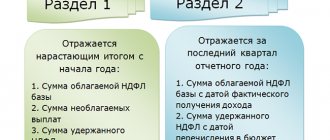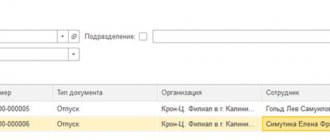Admission
Strict reporting forms are printed or generated using automated systems (clause 4 of the Regulations approved by Decree of the Government of the Russian Federation of May 6, 2008 No. 359).
Forms produced by printing must be recorded by name, series and numbers in the document form accounting book. The form of such a book for commercial organizations has not been approved. Therefore, the organization needs to develop it independently. You can take the following as a basis for developing your own document form:
- book form for recording documents of strict reporting OKUD 0504819;
- form of the book of accounting of strict reporting forms OKUD 0504045.
The sheets of the book of accounting forms must be numbered, laced, signed by the head and chief accountant of the organization, and also sealed.
This follows from paragraph 13 of the Regulations, approved by Decree of the Government of the Russian Federation dated May 6, 2008 No. 359, and letter of the Ministry of Finance of Russia dated August 31, 2010 No. 03-01-15/7-198.
Accounting for forms produced using automated systems is carried out automatically using software that allows you to obtain information about issued strict reporting forms. In this regard, when generating strict reporting forms in an automated way, the organization must comply with the following requirements:
- the automated system must be protected from unauthorized access, identify, record and store all operations with the document form for at least five years;
- When filling out and issuing a document form, the automated system stores the unique number and series of its form.
This is stated in paragraph 11 of the Regulations, approved by Decree of the Government of the Russian Federation of May 6, 2008 No. 359.
Receive the BSO on the same day with an acceptance certificate. It can be drawn up, for example, according to the form approved by the GMEC protocol of June 29, 2001 No. 4/63-2001. The act must be approved by the head of the organization and signed by members of the commission for the acceptance of strict reporting forms. The composition of the BSO acceptance committee is fixed by order of the head of the organization. Such rules are provided for in paragraph 15 of the Regulations approved by Decree of the Government of the Russian Federation of May 6, 2008 No. 359.
How strict reporting forms are taken into account
A financially responsible person must be responsible for recording, storing and disposing of BSO (an appropriate agreement is concluded with the employee or management takes over this function). The receipt of forms from the printing house is reflected in the acceptance certificate signed by the commission.
Further dynamics are kept in the BSO Accounting Book.
BSO accounting book
The form of this mandatory accounting document has not been approved; an enterprise or individual entrepreneur can develop it independently. Primary requirements:
- the sheets should be numbered, stitched, and the firmware sealed;
- they must contain the signature of the manager or chief accountant;
- forms are counted by names, series, numbers.
The book is divided into several parts: the forms received and those transferred for use are separately reflected, the balance for each type of form is displayed (it must match the inventory data). The following columns are provided:
- date of receipt (transfer);
- number of forms;
- who transmitted;
- Based on what document?
Storage
The head of the organization must, by order, appoint someone responsible for the storage and issuance of strict reporting forms. An agreement on full financial responsibility must be concluded with this employee and conditions must be created for him to store SSO. Strict reporting forms must be stored in metal cabinets, safes or specially equipped rooms, which are sealed or sealed daily. Such rules are established by paragraphs 14 and 16 of the Regulations, approved by Decree of the Government of the Russian Federation of May 6, 2008 No. 359.
Situation: when organizing the accounting and storage of strict reporting forms, is it necessary to apply the instructions approved by the protocol of the State Interdepartmental Expert Commission on Cash Registers (GMEC) dated June 29, 2001 No. 4/63-2001?
Answer: yes, it is necessary.
Minutes of the GMEC dated June 29, 2001 No. 4/63-2001 have not been canceled to date. However, it was drawn up on the basis and during the validity of regulatory legal acts that have lost their force. Therefore, it can be applied to the extent that does not contradict the Regulations approved by Decree of the Government of the Russian Federation of May 6, 2008 No. 359.
In what cases is it necessary to use CCM?
Legal organizations and individual entrepreneurs are required to use cash registers when making payments, except for enterprises and individual entrepreneurs that provide various types of services to the population, usually of a domestic nature. This is stated in Government Resolution No. 359. It does not matter whether services are paid for in cash or through a bank.
Payment through a bank has become especially relevant after the widespread introduction of plastic bank cards. It is important to check that the data entered on the form is correct, otherwise it will become invalid.
Accounting: acquisition of BSO
Reflect the purchase of strict reporting forms in accounting with the following entries:
Debit 10 (15) Credit 60
– the receipt of strict reporting forms is reflected;
Debit 20 (23, 25, 26, 44...) Credit 10 (16)
– strict reporting forms were transferred to the organization’s divisions for use (at the time of transfer of the forms for reporting).
Such rules are established by paragraph 22 of the instructions approved by the GMEC Protocol of June 29, 2001 No. 4/63-2001, and paragraph 15 of the Regulations approved by Decree of the Government of the Russian Federation of May 6, 2008 No. 359.
The receipt of strict reporting forms should also be reflected in off-balance sheet account 006. This is explained by the fact that the movement of such documents requires additional control (Chart of Accounts). Reflect the BSO on the balance sheet in a conditional valuation. Such rules are established in the Instructions for the Chart of Accounts. The conditional valuation can be equal to the actual price or any other value, for example 1 rub. The procedure for determining the conditional valuation is fixed in the accounting policy for accounting purposes (clause 4 of PBU 1/2008).
Organize analytical accounting on account 006 according to the places where strict reporting forms are stored (divisions, responsible persons), for example, you can enter the following subaccounts: “BSO in accounting”, “BSO in the department” (Chart of Accounts). Reflect the movement of the BSO on the balance sheet based on the intake control sheet. It is on the basis of this document that it is necessary to conduct turnover on account 006. Check the data on the control sheets monthly with the accounting book of strict reporting forms. Such rules are established by paragraph 22 of the instructions approved by the GMEC Protocol of June 29, 2001 No. 4/63-2001.
What has changed in accounting for BSO, valuable gifts and souvenirs since 2021?
Starting from 2021, the accounting rules for strict reporting forms, valuable gifts and souvenirs have changed in state (municipal) institutions. These adjustments are associated with the reflection of the specified material assets according to other KOSGU codes and, accordingly, according to other accounting accounts. At the same time, some provisions of Instruction No. 157n contradict the new rules, which raises questions among accountants. We will answer some of them in the article, taking into account the explanations of the Ministry of Finance.
According to Order No. 209n[1], expenses incurred in connection with the acquisition (production) of gift and souvenir products not intended for further resale, as well as the acquisition (production) of strict reporting forms (SSR), are included in subarticle 349 “Increase in the cost of other material single-use stocks" KOSGU.
Taking into account these provisions, as well as the norms of the FSBU “Conceptual Framework” [2] and Instruction No. 157n [3], we note that these material assets are assets and are subject to reflection on the balance sheet in the corresponding analytical accounts of the synthetic account 0 105 00 000 "Material reserves."
Analytical accounts for inventory accounting are formed by indicating in the account: – analytical code in the 22nd – 23rd digits of the account; – subarticles of KOSGU in the 24th – 26th digits of the account number.
As a rule, the specified material assets are other movable property and, by virtue of clause 114 of Instruction No. 157n, belong to other material reserves. Thus, valuable gifts (souvenirs) purchased for presentation (donation) within the framework of protocol and ceremonial events, as well as BSO, are subject to reflection on account 0 105 36 349 “Increase in the cost of other disposable inventories.”
At the same time, according to Instruction No. 157n, gifts and souvenirs are subject to accounting:
– on off-balance sheet account 03 “Strict reporting forms”. This account is intended for accounting for strict reporting forms that are stored and issued as part of the economic activities of the institution (forms of work books, inserts for them, certificates, diplomas, licenses, certificates, forms of certificates of incapacity for work, receipts and other forms of strict reporting). The list of forms classified as strict reporting forms is established by the institution as part of the formation of accounting policies. Off-balance sheet accounting of strict reporting forms is carried out in the context of persons responsible for their storage and (or) issuance, storage places in the conditional valuation: “one form - one ruble” (in cases established by the institution in the accounting policy - at the cost of purchasing the forms) (p . 337);
– on off-balance sheet account 07 “Awards, prizes, cups and valuable gifts, souvenirs.” The account is used to account for valuables of the same name acquired for the purpose of rewarding (donating). Awards, prizes, cups, including challenge ones, are taken into account in the conditional assessment: “one object - one ruble.” Material assets acquired for the purpose of presentation (awarding), donation, including valuable gifts, souvenirs, are accounted for at the cost of their acquisition (clause 345 of Instruction No. 157n).
It should be noted that until 2021, expenses for the acquisition (production) of BSO were reflected under subarticle 226 “Other work, services” of the KOSGU, and gifts and souvenirs not intended for sale were reflected under subarticle 296 “Other expenses” of the KOSGU. Accordingly, these material assets were not taken into account as part of inventories, and there were no questions regarding off-balance sheet accounting of souvenirs and gifts.
With the new rules coming into effect, accountants have the following questions: – is it necessary to keep double records of these material assets (simultaneously on account 0 105 36 349 and the corresponding off-balance sheet account); – how to take into account BSO on account 0 105 36 349, if, according to clause 99 of Instruction No. 157n, strict reporting forms do not belong to inventories? To answer these questions, we will use the explanations given in the Letter of the Ministry of Finance of the Russian Federation dated March 14, 2019 No. 02 06 10/16864.
When gift and souvenir products intended for presentation (donation), as well as BSO, are received at the warehouse, the specified material assets are accepted for balance sheet accounting and are reflected in account 0 105 36 349. In the future, they are recorded depending on the type of material assets as follows. Gifts, souvenirs. From the moment valuable gifts (souvenirs) are issued from the warehouse to the employee of the institution responsible for organizing the protocol (ceremonial) event, they are reflected in off-balance sheet account 07 until the moment of their delivery.
Also, the specified account reflects material assets if they are acquired by the person responsible for giving gifts (based on documents confirming their acquisition, attached to the advance report). In this case, gifts and souvenirs are not transferred to the warehouse - they are kept by the responsible person until they are delivered.
If the person responsible for the acquisition and delivery (donation) of valuable gifts (souvenirs) simultaneously submits documents confirming the acquisition and delivery of valuable gifts (souvenirs), information about such material assets is not reflected in off-balance sheet account 07. In this case, the cost of gifts (souvenirs) is expensed for the current financial period (account 0 401 20 272) upon documentary confirmation of their delivery. According to the author, when writing off gifts and souvenirs, when presenting them at various events (for example, to competition winners), budgetary and autonomous institutions can use account 0 109 xx 272, and when giving them to employees - account 0 401 20 272. The procedure for applying this or that It is advisable to register accounts for specific situations in the accounting policy.
At the same time, the said letter from the Ministry of Finance does not contain explanations at what point the write-off of gifts and souvenirs should be reflected from the balance sheet: when transferred to a warehouse or upon delivery (simultaneously with the write-off from off-balance sheet accounting).
According to the author, in order to avoid double accounting, an institution has the right to provide in its accounting policy for the write-off of valuable gifts and souvenirs from account 0 105 36 349: - when transferred from the warehouse to the responsible person for delivery (based on the invoice request (f. 0504204)); – when the responsible person submits documents on the acquisition of material assets attached to the expense report (without transfer to the warehouse); – when the responsible person submits documents on the acquisition and delivery of material assets (without transfer to the warehouse, without reflection on the off-balance sheet account 07).
In the first two cases, accounting for gifts and accounting for souvenirs from the moment they are written off from the balance sheet until the moment they are delivered is carried out on off-balance sheet account 07; in the latter case, off-balance sheet accounting is not carried out.
The accounting policy of the institution also needs to establish the procedure for writing off given gifts (souvenirs) during various events, including a list of documents confirming their delivery. These documents may be:
– a protocol on the event with an attached list of participants (list or statement of employees) to whom gifts (souvenirs) were presented; – an act on writing off gifts (souvenirs) with an appendix of a list of persons to whom the gifts were given, a photo or video report, and in some cases, a gift agreement.
When purchasing and giving gifts (souvenirs), it is necessary to take into account the norms of civil law. By virtue of paragraph 1 of Art. 574 of the Civil Code of the Russian Federation, the transfer of a gift is carried out through its delivery, symbolic transfer or delivery of title documents. A donation accompanied by the transfer of a gift to the recipient can be made orally when the value of the gift does not exceed 3,000 rubles. If the donor is a legal entity and the value of the gift exceeds 3,000 rubles, the agreement for the donation of movable property must be concluded in writing (clause 2 of Article 574 of the Civil Code of the Russian Federation). Thus, the presentation of valuable prizes and gifts worth over 3,000 rubles. carried out with the obligatory execution of a gift agreement, which indicates the personal data of the recipient.
In a budgetary sports institution, on the basis of a collective agreement and an order from the manager, on the occasion of the employee’s anniversary, a gift worth 5,000 rubles was bought for her. Payment is made through income-generating activities under an agreement with a commercial organization (store), which provides for 100% prepayment. The accounting policy of the institution establishes that gifts intended for delivery to employees should be written off from the balance sheet - when transferred from the warehouse to the responsible person for further delivery on the basis of a demand invoice, from off-balance sheet accounting - when handed over on the basis of a write-off act and a gift agreement. The accounting records reflect the following entries:
| Contents of operation | Debit | Credit | Amount, rub. |
| Advance paid to the supplier in the amount of 100% | 2 206 34 564 | 2 201 11 610 | 5 000 |
| Gift accepted for accounting (accepted to warehouse) | 2 105 36 349 | 2 302 34 734 | 5 000 |
| The advance has been offset | 2 302 34 834 | 2 206 34 664 | 5 000 |
| The gift was handed over to the responsible person for delivery | 2 401 20 272 Off-balance sheet account 07 | 2 105 36 449 | 5 000 |
| A gift is written off from an off-balance sheet account on the basis of a write-off act and a gift agreement | Off-balance sheet account 07 | 5 000 |
An autonomous sports institution, as part of the fulfillment of a state task, holds a mass sports event in accordance with the event plan. Based on the program of events and cost estimates, 100 souvenirs were purchased through an accountable person (employee of the institution). in the amount of 25,000 rubles. The cost of one souvenir is 250 rubles. All souvenirs were presented to the competition participants.
The accountable person through whom the souvenirs were purchased is the responsible person for the transfer of souvenirs to competition participants. After the completion of the event, this employee submitted an advance report to the accounting department with documents confirming the purchase of souvenirs and documents for their write-off.
The accounting policy of the institution establishes that the write-off of gifts (souvenirs), the cost of which does not exceed 500 rubles, and their delivery (donation) to individuals at sports events (when it is not possible to have information about these persons) are carried out on the basis of a write-off act material assets with a photo report attached to it. The accounting records reflect the following entries:
| Contents of operation | Debit | Credit | Amount, rub. |
| Costs for purchasing souvenirs are reflected | 4 105 36 349 | 4 208 34 667 | 25 000 |
| Souvenirs were written off on the basis of an act on the write-off of material assets with a photo report attached to it | 4 109 60 272 | 4 105 36 449 | 25 000 |
Strict reporting forms. When issuing from a warehouse within the framework of the economic activity of the institution to the financially responsible person BSO (forms of work books, inserts for them, certificates, diplomas, certificates, forms of certificates of incapacity for work, receipts and other forms of strict reporting), their accounting is carried out on off-balance sheet account 03 until their registration (transfer) for their intended purpose or write-off.
In its accounting policy, the institution has the right to provide for the write-off of BSO from account 0 105 36 349 similar to the procedure discussed above, namely:
– upon transfer from the warehouse to the responsible person (based on the demand invoice (f. 0504204)); – when the responsible person submits documents on the acquisition of BSO attached to the expense report (without transfer to the warehouse); – when the responsible person submits documents on the acquisition of BSO and their use (registration (transfer for the intended purpose) or write-off (without transfer to the warehouse, without reflection on the off-balance sheet account 07)).
The Letter of the Ministry of Finance of the Russian Federation No. 02 06 10/16864 states that when preparing the next amendments to Instruction No. 157n, the procedure for reflecting these material assets in accounting will be clarified. We hope that the discrepancies that currently exist in paragraph 99 of the instructions will be eliminated.
[1] The procedure for applying the classification of operations of the general government sector, approved. By Order of the Ministry of Finance of the Russian Federation dated November 29, 2017 No. 209n.
[2] Federal Accounting Standard for Public Sector Organizations “Conceptual Framework for Accounting and Reporting of Public Sector Organizations”, approved. By Order of the Ministry of Finance of the Russian Federation dated December 31, 2016 No. 256n.
[3] Instructions for the application of the Unified Chart of Accounts for public authorities (state bodies), local governments, management bodies of state extra-budgetary funds, state academies of sciences, state (municipal) institutions, approved. By Order of the Ministry of Finance of the Russian Federation dated December 1, 2010 No. 157n.
Institutions of physical culture and sports: accounting and taxation, No. 5, 2021
Accounting: BSO movement
In accounting, reflect the movement of strict reporting forms with the following entries:
Debit 006 subaccount “BSO in accounting”
– strict reporting forms were capitalized in off-balance sheet accounting in conditional valuation;
Debit 006 subaccount “BSO in the department” Credit 006 subaccount “BSO in accounting”
– strict reporting forms were handed over to the department employee for reporting;
Credit 006 subaccount “BSO in the division”
– strict reporting forms in off-balance sheet accounting were written off.
In addition to the forms issued to customers instead of a cash register receipt, on account 006 take into account:
- check books;
- liter petrol coupons;
- work books;
- vouchers received by the organization in the branches of the FSS of Russia;
- other similar documents.
Once the BSO is completed, it becomes the primary document. If such a document was paid for at the expense of the organization and indicates an unfulfilled obligation in relation to it, then such documents are called monetary and are recorded in account 50-3 “Cash documents”. Such documents include:
- travel documents (air and train tickets);
- cash coupons for gasoline;
- vouchers purchased by the organization;
- other similar documents.
An example of reflecting in accounting and taxation the receipt and use of strict reporting forms
CJSC Alfa provides laundry services and uses strict reporting forms.
On August 23, Alpha purchased 100 strict reporting forms “Work Order”, the total cost of which was 236 rubles, including VAT - 36 rubles. During the remainder of the month, 28 forms were issued. The organization keeps records of materials without using accounts 15 and 16. On the off-balance sheet account, strict reporting forms are taken into account in the conditional valuation of 1 ruble.
Alpha determines income and expenses using the accrual method. Income tax is paid monthly. Due to the fact that the procedure for accounting for expenses on strict reporting forms is not established in Chapter 25 of the Tax Code of the Russian Federation, the accounting policy for tax purposes of Alpha stipulated that these expenses are included in material expenses and are indirect when calculating income tax.
The purchase of forms was reflected in accounting with the following entries:
Debit 10 Credit 60 – 200 rub. (236 rubles – 36 rubles) – strict reporting forms have been capitalized;
Debit 19 Credit 60 – 36 rub. – VAT is allocated from purchased forms;
Debit 68 subaccount “Calculations for VAT” Credit 19 – 36 rubles. – accepted for deduction of VAT on forms;
Debit 006 – 100 rub. – strict reporting forms were capitalized for the balance sheet in the conditional valuation;
Debit 20 Credit 10 – 56 rub. (200 rubles/piece: 100 pieces × 28 pieces) – strict reporting forms were handed over to the responsible person;
Credit 006 – 28 rub. – strict reporting forms issued to clients were written off.
The accountant recorded these printed forms in the book of strict reporting forms.
In tax accounting, the cost of 28 issued forms is 56 rubles. was included in expenses in August.
Strict reporting documents in accounting
BSO includes not only receipts intended for making cash payments for services provided to the population. These can be lottery tickets, sick leave forms, work books, vouchers, coupons for fuel and food, travel and transportation documents and other forms used by enterprises depending on the specifics of production.
There are rules governing the procedure for issuing, recording, ensuring the safety and destruction of these documents. All of them are contained in Resolution No. 359 of May 6, 2008. The method of manufacturing BSO is mandatory: by printing, or using automated systems that meet modern requirements, i.e. having effective protection from outside access, assigning a number and series when issuing or issuing a form, and storing information about transactions for five years.
More often, specialized enterprises produce forms, and companies act as customers. BSO printing houses produce 2, less often 3, copies, since the form of the document necessarily provides for the presence of tear-off spines or copies of the main sheet. When completing a transaction, the first copy is given to the client, the second remains at the cash desk and is filed with the cashier’s report. When purchasing forms made by a printing house, a company employee, or more often a competent commission, carefully checks the presence of all the necessary details, draws up acceptance certificates indicating the name of the BSO, their quantity, numbers, series.
BASIC: income tax
Situation: how to take into account the costs of purchasing strict reporting forms when calculating income tax?
The answer to this question depends on the type of forms.
For some strict reporting forms, special expense items are provided. Thus, take into account the costs of purchasing check books as part of the costs of banking services (subclause 15, clause 1, article 265 of the Tax Code of the Russian Federation). The financial department recommends using this approach for organizations using the simplified approach (letter of the Ministry of Finance of Russia dated May 25, 2007 No. 03-11-04/2/139). This conclusion can be extended to organizations that apply the general taxation system (clause 2 of Article 346.16 of the Tax Code of the Russian Federation). Both with the accrual method and with the cash method, take into account the costs of purchasing check books at the time of payment (subclause 3, clause 7, article 272, clause 3, article 273 of the Tax Code of the Russian Federation). See also the entries reflecting the costs of bank services.
According to strict reporting forms used instead of cash registers, the tax accounting procedure is not clearly established in the legislation.
On the one hand, the costs of purchasing strict reporting forms can be classified as material costs on the basis of subparagraph 2 of paragraph 1 of Article 254 of the Tax Code of the Russian Federation. This is explained by the fact that these costs are associated with payments for services rendered, i.e., the purchased forms are used for production needs.
On the other hand, these costs can be taken into account as part of office expenses and attributed to other expenses (subclause 24, clause 1, article 264 of the Tax Code of the Russian Federation). A similar point of view is expressed by the Russian Ministry of Finance in a letter addressed to organizations using the simplified system (letter dated May 17, 2005 No. 03-03-02-04/1/123). The conclusions of the financial department can be extended to organizations that apply the general taxation system (clause 2 of article 346.16 of the Tax Code of the Russian Federation).
Thus, the organization must independently decide whether to classify such expenses as material or other (clause 4 of Article 252 of the Tax Code of the Russian Federation). Fix your choice in your accounting policy for tax purposes (Article 313 of the Tax Code of the Russian Federation).
Storing forms using automated systems
The “innovative” scenario for manufacturing BSO - using automated systems (AS) - significantly simplifies the task of organizing the storage of forms for the company’s management. If the corresponding system meets the criteria contained in clause 11 of the Regulations (is protected from unauthorized access, identifies and records transactions with BSO for five years or more, stores data on the form in memory), then there is no need to carry out the above procedures, because:
- BSO from a third party is not accepted;
- copies of the BSO remain in the memory of the computer and other devices as part of the system;
- Suppliers of modern AS for organizing the circulation of BSO, as a rule, include in the software package solutions that allow you to maintain a book of records of strict reporting forms in electronic form.
At the same time, once printed using AS, but for one reason or another damaged, BSOs should, like those created by printing, be stored in the organization’s safes or in other safe places.
The functions of the MOL in the case of using an automated system are most often assigned to an accountant trained in working with the appropriate software, and less often to a system administrator managing the automated system.
Attention! In connection with the transition to online cash registers, the taxpayer is obliged from 07/01/2018, and in some situations from 07/01/2019, to form a BSO using automated systems for strict reporting forms capable of transmitting information about mutual settlements to the Federal Tax Service online. For more details, see the material “Law on online cash registers - how to apply BSO (nuances)”. The BSO is issued to the buyer on paper or sent by email or to the client’s phone number.
Tax authorities control the completeness of revenue accounting. Find out what rights they have when checking the cash balance in the cash register, the BSO machine and generated forms from the materials of ConsultantPlus experts, having received trial access for free.
BASIS: VAT
VAT on purchased strict reporting forms can be deducted if the following conditions are met:
- the tax is presented by the supplier;
- strict reporting forms were purchased for transactions subject to VAT;
- strict reporting forms are accepted for registration;
- there is an invoice for them.
This is stated in Article 171 of the Tax Code of the Russian Federation.
For more information about this, see Under what conditions can input VAT be deducted?
The exception to this rule is when:
- the organization enjoys VAT exemption;
- uses forms in VAT-free transactions.
In these cases, include input VAT in the cost of strict reporting forms. This follows from paragraph 2 of Article 170 of the Tax Code of the Russian Federation.
Do GMEC protocols have legal force?
Some provisions of the legislation regulating the circulation of BSO are contained in the minutes of the meeting of the State Interdepartmental Expert Commission (GMEC) No. 4/63-2001 dated June 29, 2001. Do they have legal force that applies to all Russian organizations?
Despite the fact that GMEC ceased to exist on 08/09/2004, its decisions, which were made during the period when this institution exercised its powers, are generally binding (letter of the Federal Tax Service of the Russian Federation No. ED-18-2/947 dated 06/17/2014).
So, with regard to the form of the BSO acceptance certificate, you should use the form that corresponds to number 070000 according to OKUD. The order to use this form includes clause 18 of the GMEC protocol No. 4/63-2001.
Similarly, other provisions of the GMEC Protocol No. 4/63-2001 retain legal force. In particular, those that regulate BSO accounting.
simplified tax system
If a simplified organization pays a single tax on income, then the costs of purchasing strict reporting forms do not affect the tax base. Such organizations do not take into account any expenses (clause 1 of article 346.14, clause 1 of article 346.18 of the Tax Code of the Russian Federation).
If an organization pays a single tax on the difference between income and expenses, include the input VAT presented by the supplier when purchasing strict reporting forms as expenses (subclause 8, clause 1, article 346.16 of the Tax Code of the Russian Federation).
Situation: how can a simplified organization take into account the cost of strict reporting forms? The organization pays a single tax on the difference between income and expenses.
The answer to this question depends on the type of forms.
For some strict reporting forms, special expense items are provided. Thus, take into account the costs of purchasing checkbooks as part of the costs of banking services (subclause 9, clause 1, article 346.16 of the Tax Code of the Russian Federation). A similar point of view is expressed by the Russian Ministry of Finance in letter dated May 25, 2007 No. 03-11-04/2/139. Take these expenses into account when calculating the single tax after they have been paid (clause 2 of Article 346.17 of the Tax Code of the Russian Federation).
According to strict reporting forms used instead of cash registers, the tax accounting procedure is not clearly established in the legislation.
On the one hand, the costs of purchasing strict reporting forms can be classified as material costs (subclause 5, clause 1 and clause 2, article 346.16, subclause 2, clause 1, article 254 of the Tax Code of the Russian Federation). This is explained by the fact that these costs are associated with payments for services rendered, i.e., the purchased forms are used for production needs.
On the other hand, these expenses can be classified as office expenses (subclause 17, clause 1, article 346.16 of the Tax Code of the Russian Federation). A similar point of view is expressed by the Russian Ministry of Finance in letter dated May 17, 2005 No. 03-03-02-04/1/123.
What is the best way to print?
It is best to print strict reporting forms using a typographic method. This is what most entrepreneurs do. But you can also organize electronic accounting. In this case, the tax office can also check you, but it will check the cash at the cash desk not with paper stubs, but with electronic accounting data.
For printing, a special automated line is used - a slightly modified cash register. Electronic accounting allows employees to free up time to perform more important current tasks.
Electronic recording of strict reporting forms in budgetary institutions is just beginning to be practiced.
OSNO and UTII
Strict reporting forms can be used both in the activities of an organization subject to UTII and in activities on the general taxation system. As a rule, it is known what type of activity the calculations for which a strict reporting form is drawn up, used instead of cash registers, are related to. Accordingly, the costs of purchasing forms and the amount of VAT paid can be determined on the basis of direct calculation. This procedure follows from paragraph 4 of Article 149, paragraph 9 of Article 274 and paragraph 7 of Article 346.26 of the Tax Code of the Russian Federation.
In some cases, it is impossible to determine in what type of activity BSOs are used. Therefore, the costs of their acquisition cannot be directly allocated. In this case, distribute them in proportion to the share of income from each type of activity (clause 9 of Article 274 of the Tax Code of the Russian Federation). The need to use this method may arise, for example, when distributing expenses according to a checkbook.
VAT, which can be deducted on distributed expenses for social security, is calculated according to the methodology established in paragraphs 4 and 4.1 of Article 170 of the Tax Code of the Russian Federation.
To the received share of expenses for the activities of an organization subject to UTII, add the amount of VAT that cannot be deducted (subclause 3, clause 2, article 170 of the Tax Code of the Russian Federation).
Accounting for expenses using strict reporting forms
Since BSO are taken into account off the balance sheet, the question arises where to allocate the costs of their acquisition. Instructions on the procedure for applying budget classification, approved by order of the Ministry of Finance of Russia dated July 1, 2013 No. 65n, indicate that such expenses are taken into account according to the analytical code KOSGU 226 “Other work, services”, that is, the last 3 digits of the budget expense account will be 226. Let's list such accounts:
- 0010960226 “Costs for other work, services in the cost of finished products, work, services”;
- 0010970226 “Overhead costs for the production of finished products in terms of other work and services”;
- 0010980226 “General business expenses in terms of other works and services”;
- 0010990226 “Distribution costs in terms of other works and services.”
Example:
The institution purchased 10 work books for 230 rubles. BSO are accounted for at the actual cost of the purchase. Of these, 4 were issued to employees serving in the management apparatus this month.
Expenses for the acquisition of BSO were taken into account in the amount of 2,300 rubles:
- Dt 0010980226 “General business expenses in terms of other work and services”;
- Kt 0030226730 “Increase in accounts payable for other works and services.”
BSO reflected on the balance sheet in the amount of RUB 2,300:
- Dt 03 “Strict reporting forms.”
The cost of 4 work books in the amount of 920 rubles was written off:
- Kt 03 “Strict reporting forms”.
Organization of control over the safety of BSO
It is possible to organize control over the safety of BSO by conducting an inventory and control checks.
With the help of an inventory carried out in accordance with the Methodological Guidelines for the Inventory of Property and Financial Liabilities, approved by Order of the Ministry of Finance of the Russian Federation dated June 13, 1995 N 49, the actual availability of BSO must be calculated and their balances reconciled with the data in the ledger of strict reporting and accounting forms. It is also necessary to check the procedure for maintaining the book of forms: its completeness, compliance of the data with the primary documents and the presence of remnants of unused and damaged forms.
A commission appointed by the head of the institution conducts an inventory of BSO by type of form, taking into account the starting and ending numbers, as well as for each of their storage locations and financially responsible persons. At the same time, the commission draws up an inventory list (matching sheet) of strict reporting forms and monetary documents (f. 0504086).
All inventory records are signed by the chairman and all members of the institution’s inventory commission.
The correspondence of actual data and accounting data can also be verified during control checks carried out at the discretion of management. For these purposes, by order on the accounting policy for the current year, the head of the institution must approve the schedule of internal audits.
In accordance with this schedule, a commission appointed by the head must check the maintenance of records and compliance with the conditions for storing strict reporting forms by financially responsible persons. Violations identified during control checks are reflected in the report so that prompt measures can be taken to eliminate them.
Accounting for strict reporting forms
BSO turnover is recorded in off-balance sheet account 006, which is called “Strict Reporting Forms”. BSO accounting is carried out through entries reflecting the amount of costs for the production of forms (clause 22 of the minutes of the GMEC meeting No. 4/63-2001). As a rule, these are the postings:
- Dt account 26 “General business expenses”;
- Kt account 60 “Settlements with suppliers and contractors.”
In some cases, BSO accounting involves the creation of subaccounts for account 006. This is possible if the forms capitalized by the accounting department are subsequently issued to other employees who actually manage the BSO (we examined a similar scenario above). In this case, subaccount 006-1 “BSO in accounting”, as well as subaccount 006-2 “BSO from executors” can be formed.
How to correctly write off BSO in accounting and what documents to prepare? The answer to this question was given by 2nd class State Civil Service Advisor I. O. Gorchilina. Get free trial access to the ConsultantPlus system and get acquainted with the official’s point of view.







